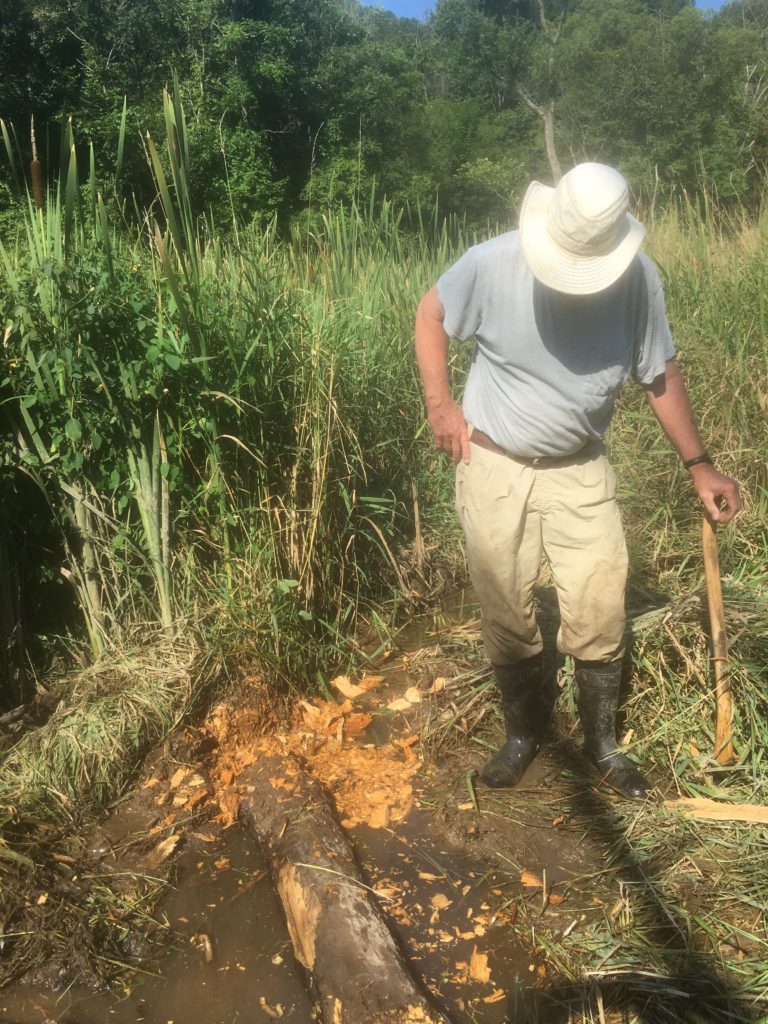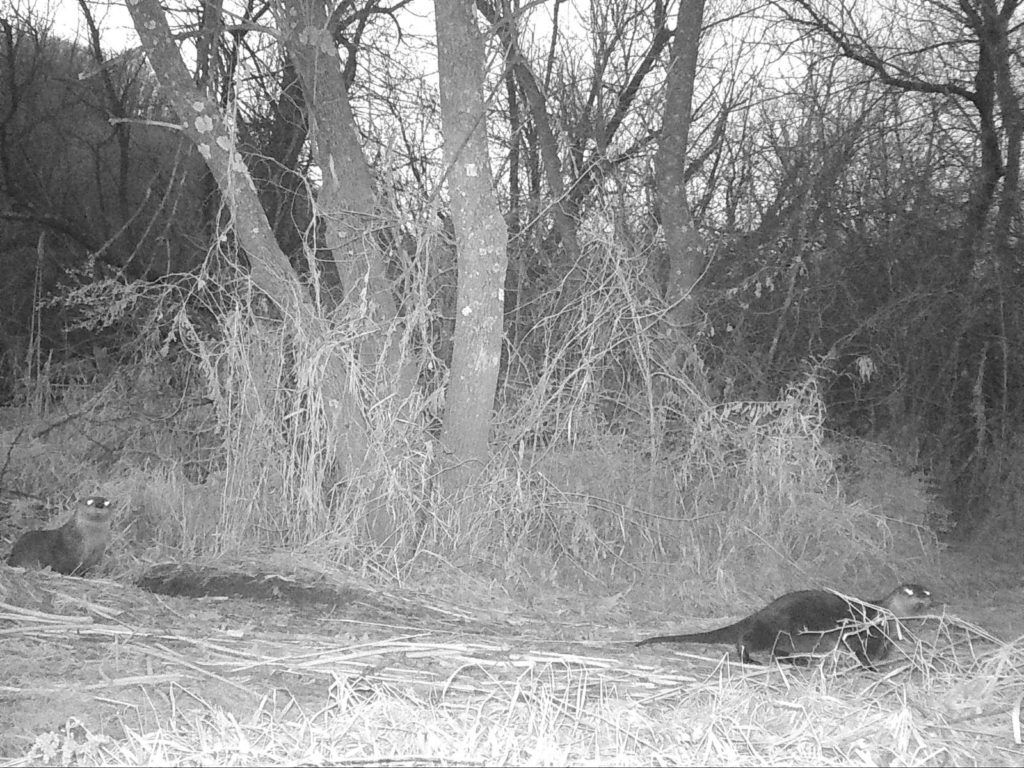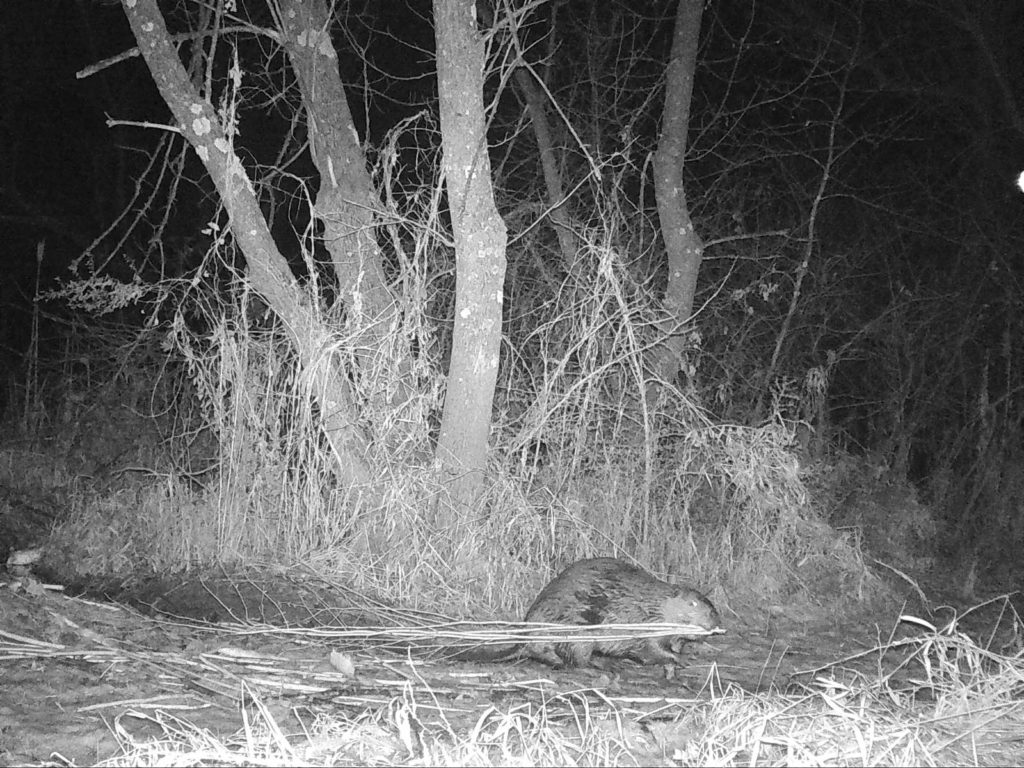THEY REAPPEARED THIS FALL, just as suddenly as they had left a few years back. At dusk on 2012 summer evenings we often kayaked our little stretch of the West Fork. We grew to expect a beaver encounter or two each evening, but still were startled by the sudden crack of a broad tail slapped on the water’s surface, a territorial warning. We could detect the mammal smell of them on a particular curve of the river. But then they moved on.
And now they are back, these rotational grazing farmers, shapers of the land. But let me back up a little. We’ve had several wet years, and everyone around these parts notices there is water standing or flowing in places it has not usually been. One of our ponds, though, the naturally formed one below Little Barn Cabin, seemed to be losing water. In fact, the flow from the springs that feed that pond was being diverted by some downed trees. The water was backing up and forming new wetlands in among the trees. The prospect of a new wetland was okay, but the threat of losing the over-wintering spot for at least a hundred turtles and countless other animals was not.
A BEAVER COMPARISON IS TEMPTING – AND APT
It’s not a stretch to draw comparisons between Tom and a big beaver. The human got to work shoveling muck and chopping out the downed trees that threatened to dry up the old pond and make a wetland out of the woods between the river and the pond and beyond. Soon the audible trickle exiting the pond was evidence the water level was rising. Shortly thereafter Tom stood at the outflow and proclaimed this would be a great place for a beaver to build a dam. Two days later they began.

Tom had also noticed that the wet marshy area leading to the pond was starting to be choked by willows. He was about to go to work on clearing them out, but the actual beavers beat him to it. The beaver clan – who knows if it was the returning clan? – have now removed a couple hundred willow saplings and built a small dam, raising the water level by 18”. The turtles, frogs and water fowl are the beneficiaries.
CAPTURING ON CAMERA
We set a trail camera to capture the activity between that pond and the river, a well-used land bridge spanning the twenty or so feet. The photos show those beavers going back and forth, dragging willows, making several trips a night. They never look up at the camera, they just keep working. Of course, they don’t just go after the tender willow shoots. So, we add beaver to the list of mammals that threaten the oaks that we plant or find, and seek to protect with wires till they can fend off rabbit, rodents, deer- and now beaver.


A GOOD READ
Ben Goldfarb wrote Eager: The Surprising Secret Life of Beavers and Why They Matter. He probably owes us a little for the success of this fascinating, and we dare say important book: we have bought at least eight copies, mostly to give to folks who consider beavers to be the enemy for various reasons. Meanwhile, we are watching with keen interest, and just a little bit of nervousness, to see how the relentless industry and work ethic of these creatures will change this little corner of the ecosystem. Stay tuned!
